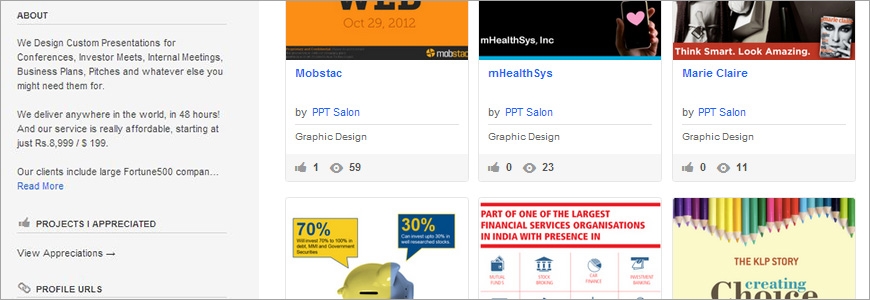Abhisek Sarda / 2013-05-03
10 Tips to Make a Good Design Portfolio

We receive 35-40 portfolios every month from people who want to work with us. It should be a joy to go through the work of young designers, see experimental stuff… But truthfully, it's a pain. A majority of the portfolios we get are badly structured, have too much or too little work, are 30 MB zip files, provide no context…
To make our lives easier, we thought we’d share a few tips on how to make a design portfolio:
Portfolio is Different from Backup Folder
Don’t treat your portfolio as your backup folder, dumping everything you’ve ever done in it. Show us a selection of your best and most recent work. Put in stuff you’re really proud of. Don’t ever put something in your portfolio and then say “oh, but I did that long back… now I’m much better”.
What we’re looking for
When we look at your portfolio, we are primarily looking for evidence of a great aesthetic sense that matches ours, conceptualization skills, understanding of fundamental design principles, ability to do real, commercial work… Show us this.
Leave out your Art, Practice work and College Exercises
No matter how good you are at doing water color painting or charcoal sketches, we don’t really want to see it. Leave out all your practice sketches, typography exercises, photographs… We want to see projects that are relevant to the kind of work we do and would expect you to do, if you work with us.
Do More Work. Real Work.
If you are just starting out and don’t have much to put in your portfolio, take a month and do a set of hypothetical projects before applying. Don’t ever use the excuse of not having a big enough body of work to cram your portfolio with college assignments. When you do hypothetical projects, identify the kind of work you want to be doing and do projects in that area.
Create Mock-ups.
Just putting together flat artwork of your project is ok, but if you really want your portfolio to standout, create mock-ups of your work. If it's a poster, put it on a wall or in someone’s hand. If it's a website you’re showing, put it on a monitor. Pixden is a good place to buys mock-up templates ($4-15). Another good source for mock-ups is GraphicRiver.
Keep the Portfolio Minimal.
Let the focus be on your work. Don’t overwhelm your work with the design of your portfolio. Give it space, lot of space.
Provide Context.
Write a short note about the project. What the brand/client does, how you approached the project, how well it worked (or didn’t). If other people (colleagues / professors) contributed to a project, mention your role clearly.
Its 2013. Stop sending 30 MB portfolios
Anyone who sends us a 30 MB .zip file has already annoyed us. Create a Behance account and put up your work there. Send us a link. Or better still, make your own website with your portfolio on it. But, don’t ever send us 22 JPGs attached to an email. We’ve even had really stupid people send us PSD files attached to emails and sadly, we’ve deleted those emails without even looking at the files.
Learn Some Manners. Writing a Covering Email.
Just because you are a designer doesn’t mean you can paste your portfolio link in an email and send it off. While no one expects you to write a long meaningless letter, take the time to summarize your resume in your email. It piques our interest. It might tempt us to open your portfolio. And tell us why you want to work with us. Be real when you write, we don’t want to hear how you will give your “best sincere effort”.
Don’t Overdo it. Keep it simple.
While it is a must to write some kind of a note when you send us your portfolio, keep it simple. Don’t overdo it by trying to write a very clever email. Keep the tone professional and focus on giving us information, not entertaining us.
Put your photo.
Everyone loves a pretty face. Or a bearded one 🙂
If any of you have additional tips about making a good portfolio, add them in the comments.
If you have a good portfolio and want to work with us, write to 911@oppositehq.com